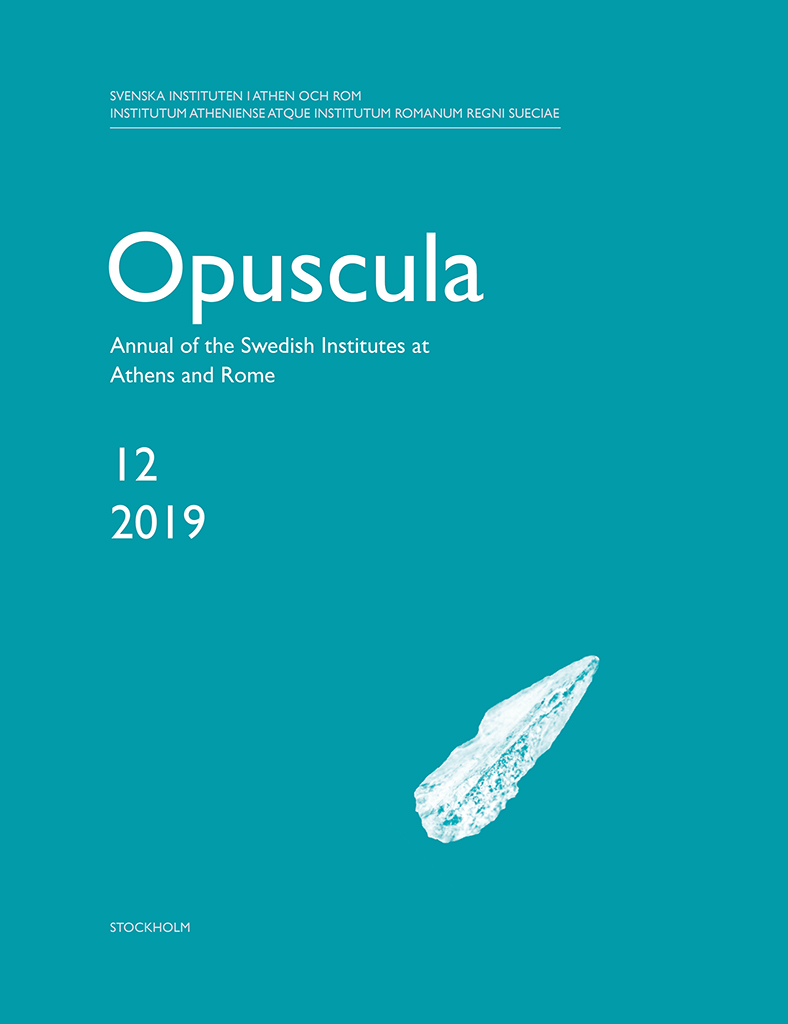All content of Opuscula 12 (2019) is available with open access. Printed edition distributed by Eddy.se AB. Also available at Amazon.com, Adlibris, and Bokus. View volume at ERIH PLUS. Bioarchaeological field analysis of human remains from the mass graves at Phaleron, Greece. With an introduction by Stella Chryssoulaki and an appendix by Anna Linderholm, Anna Kjellström, Vendela Kempe Lagerholm, and Maja Krzewińska By Anne Ingvarsson (Gustavianum. Uppsala University Museum, Sweden) & Ylva Bäckström (Lund University, Sweden) Abstract In 2016, archaeological excavations undertaken by the Ephorate of Antiquities of West Attica, Piraeus and Islands 3.8 km south-west of Athens, Greece, revealed mass burials of 79 skeletons in three rows. The burials are dated to the 7th century BC. The anthropological field documentation was undertaken by The Swedish Institute of Athens, and followed established bioarchaeological protocols regarding taphonomic processes, age, sex, injuries, and pathological changes. The descriptions and interpretations should be regarded as preliminary field observations. A majority of the individuals were young adult or juvenile males, most of them without signs of active disease and with a generally good oral health status, but with corroded iron shackles around their wrists. Cause of death could not be determined although extensive and likely…
Distributed by Astrom Editions Ancient Greek cult practice from the archaeological evidence. Proceedings of the Fourth International Seminar on Ancient Greek Cult, organized by the Swedish Institute at Athens, 22–24 October 1993 Edited by Robin Hägg A collection of thirteen papers, read at an international seminar in Athens, that deal with various phenomena of Greek cult practice, analyzing the information gained from the archaeological evidence. Among the special topics discussed are cult practice in the acropolis sanctuary of Minoa on Amorgos, the sanctuaries in the Artemision of Ephesos, the role played by osteological analysis in the understanding of Greek sacrificial practice, the interpretation of animal bones and fire traces connected with ritual feasting in the Herakleion on Thasos, ritual and society in Early Iron Age Corinthia, small dedications from the Archaic temple of Poseidon at Isthmia, altars in Greek hero cults, the early history of the sanctuary of Demeter and Kore at Eleusis, a sacrificial area near the sanctuary of Apollo Daphnephoros at Eretria, terracotta plaques and other finds from the sanctuary of Demeter and the Dioscouri at Messene, the interpretation of sickles in Greek sanctuaries, changes in votive practice from Classical to Hellenistic times, and cursing in the Sanctuary…


